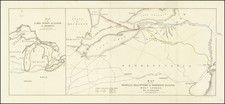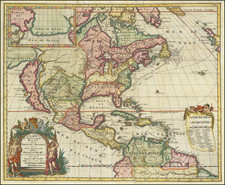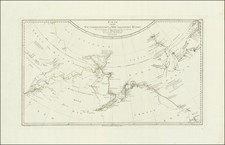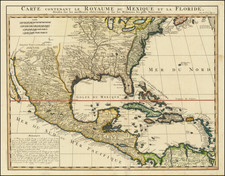The Great Lakes & Upper Mississippi at the Start of the American Revolution
Scarce map of the Great Lakes and Upper Mississippi region, published just prior to the start of hostilities between England and the American Colonies.
The map extends east to include Lake Ontario, North to James Bay and Southeast to Philadelphia. Based upon The map shows numerous French forts throughout, along with substantial Indian details. The map also includes nice coverage of the Missouri River Valley to Kansez and Ft. d'Orleans. Chicagon [sic] is named. One of the best large format maps of the region during the latter part of the 18th Century, based upon D'Anville's map of North America.
The map provides exceptional early detail along the lower portion of the Missouri and the upper waters of the Mississippi. The Keweenaw peninsula is named as Kiaonan, and Isle Royale is called I. Minong. The area is filled with scores of Indian tribes and villages named and located.
As noted by map scholar R.V. Tooley, in describing the D'Anville's precursor map:
To illustrate the cartography of the second half of the eighteenth century, a d'Anville map is essential. He dominated not only French but all contemporary geographers. He was one of the foremost to leave blank spaces in his maps where knowledge was insufficient ... His representation of the Great Lakes is superior to that of his contemporary, John Mitchell.
One of only a few maps to focus on the Great Lakes and Upper Midwest region during in the second half of the 18th Century.
Paolo Santini (1729-1793) was an Venetian engraver known especially for his religious prints and fine cartographic engravings. He published in Venice and may have a been a member of the clergy. In his maps, he largely adopted and adapted the work of his French counterparts, especially the brothers de Vaugondy.













![Illinois [and Southwestern Wisconsin]](https://storage.googleapis.com/raremaps/img/small/84717.jpg)
![Carte De La Louisiane Et Du Cours Du Mississipi . . . Juin 1718 [1st State!]](https://storage.googleapis.com/raremaps/img/small/59797.jpg)